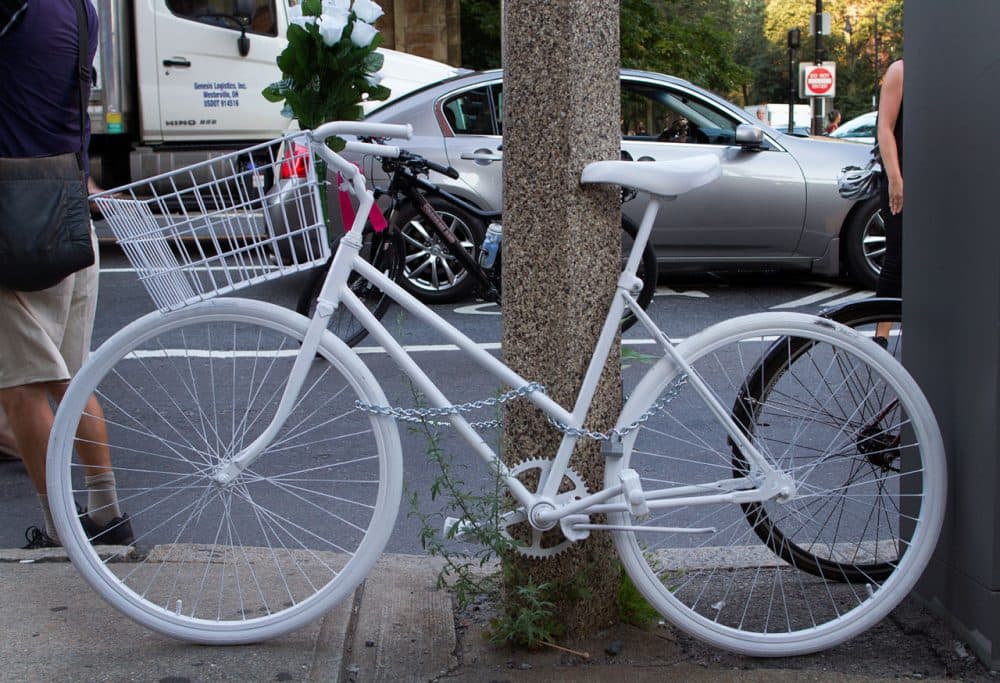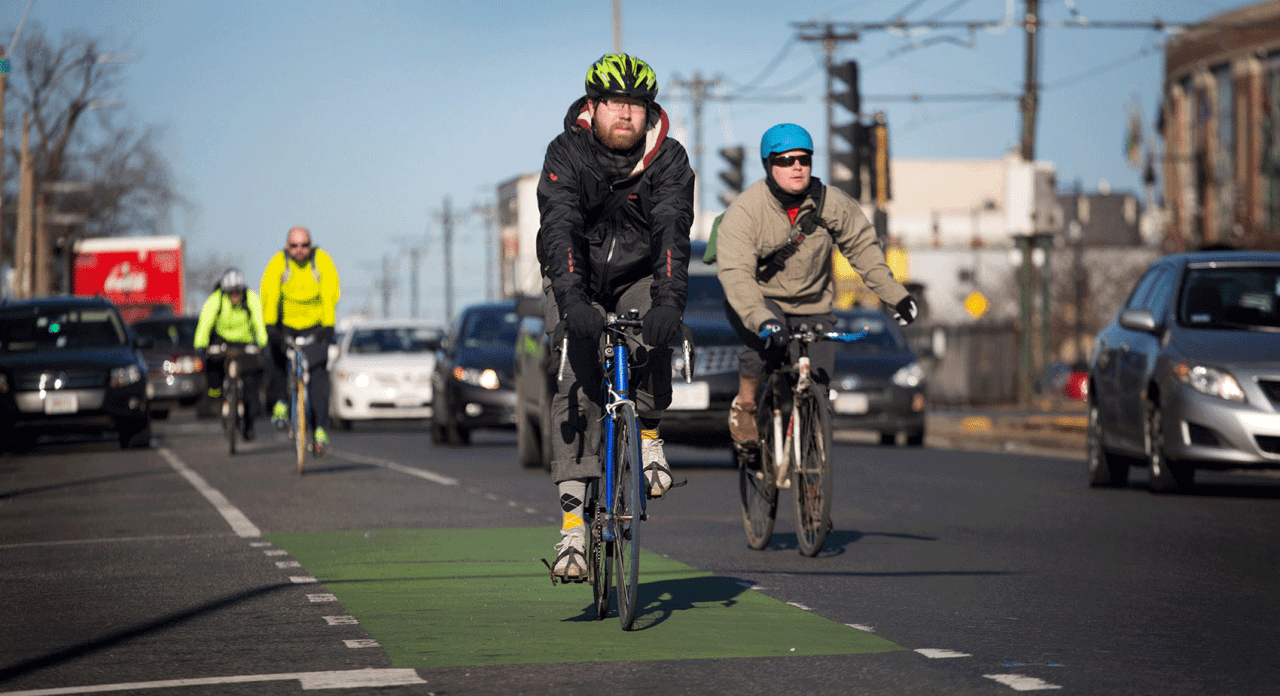Advertisement
Cyclists Call For Greater Barriers On Boston Streets
Resume
When cyclist Anita Kurmann was killed this summer at the intersection of Beacon Street and Massachusetts Avenue, she was reportedly inside a painted bike lane. When Boston University student Christopher Weigl was killed three years ago on Commonwealth Avenue, he also was reported to be inside a painted bike lane.
For Dr. Anne Lusk of Harvard's T.H. Chan School of Public Health, the solution to danger faced by cyclists is not painted bike lanes.
"Bike lanes are safer for the pedestrians, bike lanes are safer for the car drivers — bike lanes are less safe for the bicyclists,” Lusk said. "And Boston will proudly talk about the miles and miles and miles of bike lanes that are going to be put in. You're putting in bicycle facilities that are less safe for the bicyclists."
Lusk spoke before a packed city council chamber at City Hall Monday night, with dozens of cycling advocates making the case for new resources to beef up bike infrastructure.
Boston City Councilor Ayanna Pressley called the hearing before the Committee on City, Neighborhood Services and Veterans Affairs.
"We've got to find a way to coexist and share our roadways,” Pressley said, “ensuring the safety of all, pedestrians, motor vehicle drivers and cyclists. It's simply a matter of life and death."
City officials detailed at Monday’s meeting plans including a new form for police to report cycling accidents, enhanced methods for collecting data on crashes, and seven miles of new bike lanes. There are more Hubway bike-sharing stations coming for Boston's neighborhoods, and the city has signed on to Vision Zero, a five-city project that aims to do away with traffic deaths.
But advocates say the city is only going after the low-hanging fruit.
"If we really want to make efforts to make it safer for walking and biking, we're going to have to start investing a lot more money,” said Doug Johnson of the Boston Cyclists Union. “The city of Boston is dedicated to Vision Zero right now, but the funding isn't really there, so I think you as a City Council, the No. 1 thing you can do to really make our streets safer, traffic-wise, is invest more."

Many advocates call for investment in cycle tracks, physical barriers separating cars and bikes, including Dr. Lusk. Lusk says funding for the tracks should come primarily from government, but can be supplemented by raising parking permit fees and imposing new fees on developments.
"What do we do with Mass Ave. and all the other roads in Boston?” Lusk said. “I would still suggest that the one answer is the cycle track, the barrier-protected, bicycle-exclusive track beside sidewalks."
In 2010, former Boston Mayor Thomas Menino said, "The car is no longer king in Boston." Three years later, Menino outlined a plan to install 20 miles of cycle tracks on city streets over the next five years.
But just a handful of cycle track projects are in the works. Two miles of cycle track are being built downtown, in the so-called Connect Historic Boston trail, while the city plans less than a mile on a busy stretch of Commonwealth Avenue at Boston University.
With about a dozen bicyclists killed in Boston in the last five years, cyclists are saying more needs to be done.
This segment aired on September 15, 2015.
